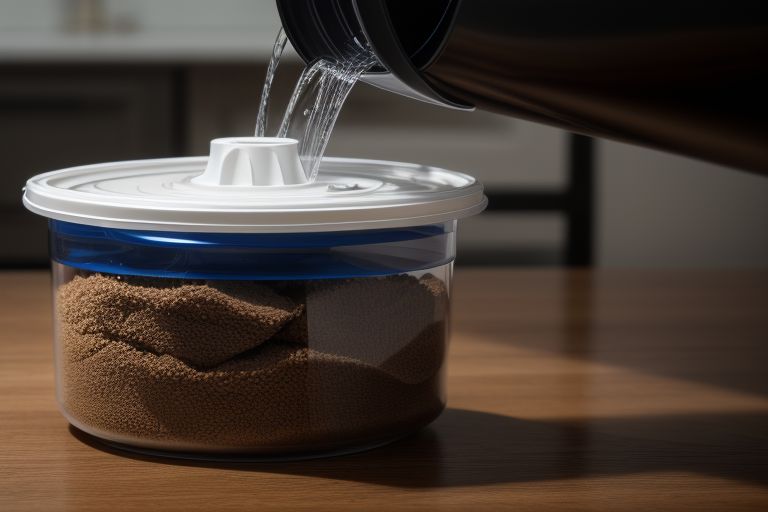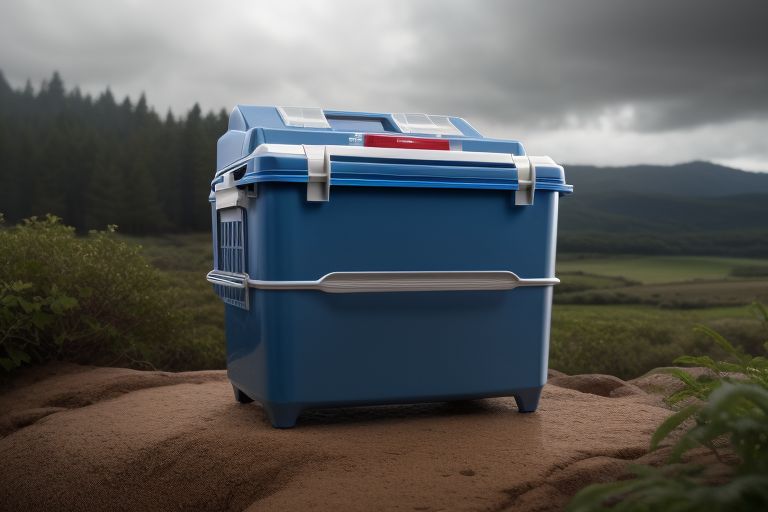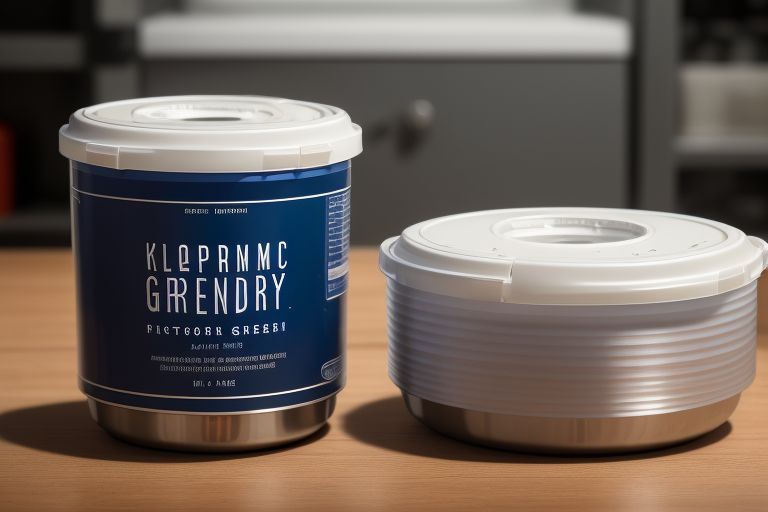Storing dry items the right way is important to keep them fresh and they may stay longer. Whether you are buying in bulk to load up on staples like flour, rice, pasta or cereals; it is important that you know what the best practices for storage are… so as to keep waste at bay and ensure maximum use of your pantry items. All in all, it is considered as one of the best survival food storage methods, and helps to keep your dry goods fresh as long as possible.
Storing dry goods properly is crucial

Key to organizing your pantry is knowing how (and why) to store dry goods properly, so it maintains that texture and taste you fell in love with at the bulk bins. Storage in the right manner helps prevent spoilage, keeps your food tasty, and lowers contamination chances.
Also Read More:
- 7 Tips for Saving Money While Shopping Online
 It is the era of digitalization and shopping online has now turned into an instant process to get desired things. Online shopping is great in terms of convenience but it has its downsides as well, mainly the case of overspending. Look… Read more: 7 Tips for Saving Money While Shopping Online
It is the era of digitalization and shopping online has now turned into an instant process to get desired things. Online shopping is great in terms of convenience but it has its downsides as well, mainly the case of overspending. Look… Read more: 7 Tips for Saving Money While Shopping Online - How to Cut Your Grocery Bill in Half
 Estimating your home grocery bill can be challenging with changing food prices and varying household requirements. Well, if you’ve been looking for some actual ways to slash your grocery bill in half… this is the post for you. To facilitate and… Read more: How to Cut Your Grocery Bill in Half
Estimating your home grocery bill can be challenging with changing food prices and varying household requirements. Well, if you’ve been looking for some actual ways to slash your grocery bill in half… this is the post for you. To facilitate and… Read more: How to Cut Your Grocery Bill in Half - 8 Easy Decluttering Tips for Busy People
 With today being so fast paced clutter can creep in as a creeping vine, making it difficult to be organized and focused. When you are a busy person, clutter can seem daunting to deal with but it need not be so.… Read more: 8 Easy Decluttering Tips for Busy People
With today being so fast paced clutter can creep in as a creeping vine, making it difficult to be organized and focused. When you are a busy person, clutter can seem daunting to deal with but it need not be so.… Read more: 8 Easy Decluttering Tips for Busy People - The Ultimate Guide to Packing for a Family Vacation
 An Introduction: The Art Of Packing For Your Family Vacation For a stress-free experience, make efficient packing for family vacation. This ultimate guide to packing for a family vacation will help you get organized and make sure you have everything necessary… Read more: The Ultimate Guide to Packing for a Family Vacation
An Introduction: The Art Of Packing For Your Family Vacation For a stress-free experience, make efficient packing for family vacation. This ultimate guide to packing for a family vacation will help you get organized and make sure you have everything necessary… Read more: The Ultimate Guide to Packing for a Family Vacation - Quick Decluttering Hacks for a Tidy Room
 While having a clean room may feel like a breath of fresh air — though anything but when it comes to keeping it uncluttered. However, this is where the quick decluttering hacks for a tidy room comes in! Whether you want… Read more: Quick Decluttering Hacks for a Tidy Room
While having a clean room may feel like a breath of fresh air — though anything but when it comes to keeping it uncluttered. However, this is where the quick decluttering hacks for a tidy room comes in! Whether you want… Read more: Quick Decluttering Hacks for a Tidy Room
Why Proper Storage Matters
Dry goods can be easily ruined by moisture, pests and air exposure -all which cause spoilage and loss of quality. When you store your dry goods properly it lessens the chance of that happening, and keeps them fresherlonger.
Expiration dates and shelf life explained
All dry goods have a life, or the period they stay safe to consume and retain their best flavor. For all of these reasons, learning more about expiration dates—the different types and how to decode them—can help you stay organized and safe in the kitchen.
How To Store Different Dry Goods
The storage of dry goods varies based on the nature of the items to preserve its freshness. In this guide, we break down the best way to store dry foods by type.
Grains and Cereals
Placing grains and cereals inside closed containers is a preventive measure against humidity and pests. Recycled glass jars, plastic bins or vacuum-seal bags are great for this task.
Keep in a Cool, Dry Place
Grains and cereals should be stored in a cool, dry place out of the sun. Warm to finishes can make them rot and also leads nutrients lost very quickly through evaporation.
Check for Pests Regularly
Check your grains and cereals every so often for infestations and more. If you see roots that contain mold, discard the items right away to contain the spreading.
Flour & Baking Ingredients
Place any flour and baking ingredients separately in airtight, food-grade storage containers. It will do a really good job of sealing off water and bugs.
Store in a Dark, Cool Place
Keep flour and other baking ingredients in a dark, cool place. Even the exposure to light or heat can make them go off quicker and cause a lot of unnecessary wastage.
Refrigerate for Storage over Several Months
Store flours and other baking ingredients in the refrigerator or freezer for even longer shelf life. This can help prevent them from going bad and keep them longer.
Pasta and Legumes
Store pastas and legumes in the original packaging for non-seasonal items that come in resealable bags or transfer to an airtight container to keep out moisture and pests.
Store in a Pantry or Cupboard
These items should be kept in a roll away or cupboard that is cold and dry. Do not keep them in heated places or humid areas.
Check for Expiration Dates
Chech expiry of pasta and legumes to be always safe to eat them, While you can store them away to increase their life but ensure that you use within the recommended time line.
Dry Food Storage Solutions

The fruition of your dry goods will depend largely on whether you choose the right storage solutions. Read on to discover the top storage solutions for your dry goods, and ensure that you maintain their freshness around the house.
Choosing the Right Container
Choose containers according to the kind of dry goods you store. For instance, grains and cereal are best stored in airtight containers whereas vacuum sealed bags are best used for long-term storage of bulk items.
Labeling and Organizing
Labeling everything properly and keeping similar items together is the key to a well managed pantry. To identify what you have and ensure an organized pantry, remember to label the contents and expiration dates on the containers so you can always know when things will expire.
Maintaining Container Hygiene
Do not forget to clean and disinfect storage containers on a regular basis. This will allow your dry goods to be protected from bugs and keeps them fresh forever.
Suggestions on managing the pantry and preventing wastage

Good pantry management means you can avoid waste, and use the dry goods in your larder effectively. Tips for a more controlled pantry, less waste and oily food
Implement the FIFO Method
By using this method, we simply just take the oldest items out of our pantry first and leave the newest ones for a later date. This chore results in a higher probability that the items will be consumed well before their best by dates, and therefore less likely to waste.
Organize by Expiration Date
Organize pantry goods like expiration > furthermost to the back, closest to the front. — TheFrugalLives This makes it simpler to eat them faster before they ruin.
Regular Assessment and Organization
Once in every while, check your pantry and rearrange it well to know what do you have. The key to effective meal planning is avoiding redundancy, as well helping to reduce waste and preventing spoilage of your dry goods.
Create an Inventory List
Keep a list of your dry goods so you dont forget what you have and they remind ysans they need replacement. Either update this list often as you buy things or write the date down when an item is gone.
Use Inventory Management Apps
Pantry management apps can be useful for keeping track of what you have on hand and alerting you to refill your pantry before things run out. These apps will make the process a lot easier and help you better organize your pantry.
Center Meals Around Pantry Staples
Dry Goods First—Grains and Beans, Build from There. This will help you use up those items before they expire and make meal planning easier!
Utilize Creative Recipes to Reduce Food Waste
Use up what you have laying around to limit waste. Whether grains, pasta or legumes are left over – let there are always delicious soups, salads or casseroles made of pantry staples that can be combined.
Experiment with New Recipes
Use them in new recipes. Trying out new dishes can be a great way to get rid of ingredients and keep your meals exciting.
Share with Others
If you find that you have too many dry goods and won’t be able to consume them in time, try sharing with friends, family or local food banks. It limits waste and provides for some support of those less fortunate.
Conlusion: Keeping Your Dry Goods Fresh Longer
Your dry goods will stay fresh for a long time, but only if you store them correctly, manage them wisely, and use some of the easy techniques I detail below. With proper dry food storage techniques, the correct dry goods storage containers, and pantry organization practices; you can store your food in a safe and accessible place.

